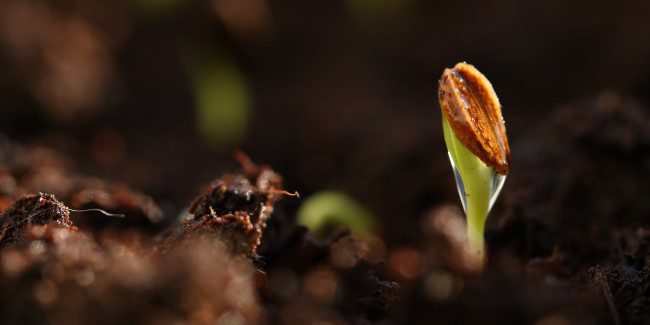
How to germinate seeds
The germination of vegetable seeds is the process of growing plants directly from seeds rather than growing them from cuttings or buying plants that have already been grown. Although this may seem like a simple…
Iberian Peninsula express shipping
0€ Orders over 60€
*6€ orders under 59€
East, West, South Europe express shipping
0€ Orders over 150€
*18€ orders under 149€
North Europe express shipping
0€ Orders over 160€
*20€ orders under 159€
Ireland, Norway, UK normal shipping
0€ Orders over 60€
*6€ orders under 59€
Rest of the world normal shipping
0€ Orders over 180€
*25€ orders under 179€
Shipping costs can be confirmed in your shopping cart.
For additional shipping methods, please reach out through info@kannabia.com.


*Website protected by SSL.
**Not available in all regions.
*Your coupon will be sent via email.
*Should you have any question, comment or feedback, please do not hesitate to contact us.

Cannabis, like any plant, requires a series of nutrients to be able to develop properly during all stages of its growth cycle. It is our decision to choose how to supply them, whether it is a natural organic source or some type of fertilizer.
Macronutrients are essential to overall plant health.
Surely you have once seen the abbreviation “NPK” (Nitrogen, Phosphorus and Potassium), the three main nutrients, in fertilizer bottles.
Nitrogen is the most abundant element in our planet’s atmosphere and it is needed to make chlorophyll in plants. This component can move around in the plant while performing other key functions such as photosynthesis and synthesis of amino acids into proteins.
We have to consider that 98% of nitrogen in soil is in organic forms and requires a series of conditions such as humidity, temperature and oxygen so that soil microorganisms can decompose nitrogen and the plant can thus absorb it.
Furthermore, an excess of water and extreme temperatures can cause nitrogen loss and, on the contrary, an excessive nitrogen load, apart from giving the plant a distinctive dark green color, can delay flower formation since chalices are not developed and only baby leaves are produced.
If you are going to use a commercial fertilizer, be careful not to overdo it since an excess will cause irreparable root burns.
In case of using an organic fertilizer, and in order to avoid damaging the roots, you must take into account that there are different substances already present in compost, such as ferments, leachate or other natural elements.
Phosphorus, found on the surface in some type of phosphate, is also an essential element for life, more durable and connected with the soil and resistant to watering. A phosphate is an important structural element in DNA and RNA of living organisms and a key element to perform photosynthesis and help with the development of plant roots. During the flowering period, phosphorus levels will increase along with potassium’s following a decrease of nitrogen.
We must also be cautious if we are going to use a bottled pk fertilizer and remember that it will not always be beneficial to add more nutrients to improve plant growth since plants don’t put on weight when you overfeed them, actually you can cause an irreparable harm if you feed the plant in excess during this cycle. The fattening of the flowers will not only depend on the food they receive but also on the lumens they get. These two elements are essential to increase production and boost yields.
Potassium is an alkali metal that our cannabis plant requires to function properly. It plays a fundamental role in flower development and an eventual deficiency can reduce the crop yield quantity.
Besides ensuring a proper fattening of your flowers, potassium is also responsible for regulating the salt levels in the plant as well as the opening and closing of stomata, which are found on the leaves and allow for gas exchange, managing the absorption of CO2.
Both micronutrients and macronutrients are vital for proper development and functioning of plants. Our cannabis plant will need more than 20 to be able to get an appropriate structure, firm enough to support the weight of the future flowers.
Nature is so wise that the scarcer an element in the soil, the less the plant will need it. This is the case of minerals such as iron, boron, molybdenum, calcium, sulfur or zinc. All of them play a small but essential role.
Iron helps with the production of chlorophyll and is also responsible for many enzyme functions.
zinc activates enzymes that are responsible for the synthesis of certain proteins and helps with internodal stretching.
sulfur plays a vital role in the creation of amino.
Calcium and magnesium are essential for the plant in the flowering cycle.
When growing cannabis, it is vitally important, to ensure a proper development, that your plants do not suffer from nutrient excesses or deficiencies. The quality and quantity of cannabis crops may vary depending, of course, on the soil substrate used. Personally, I enrich the soil substrate by adding some selected organic waste, previously mixed in my compost bin, throughout the fall and winter, so that when it comes time to use this soil again, it is loaded with nutrients so my plants can feed on it during the vegetative stage without having to be fertilized with commercial products and only using microbes in the irrigation water once a week. Then, when the plant is reaching its flowering period, I enrich substrate with a special mix I prepare that includes mycorrhizae, trichoderma, microalgae, and other ingredients you can learn about in my article “Substratum“.
Finally, I also use, at a more advanced flowering stage, cane molasses and worm humus. This will make the flowers have an unparalleled flavor: the taste of ARTISANAL ORGANIC!
I hope this article helps you to better understand the world of cannabis cultivation.
If you want to learn more about organic farming, follow me on Instagram @dra_weed